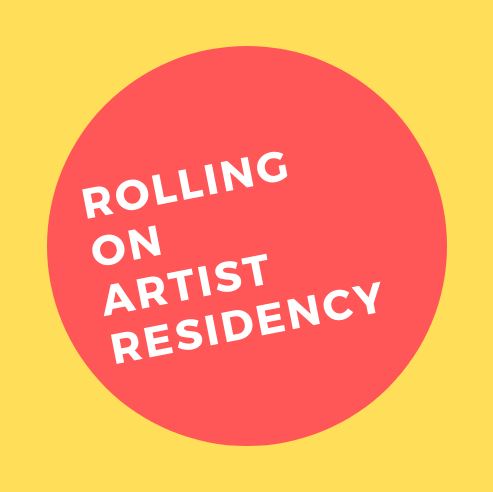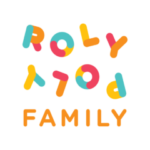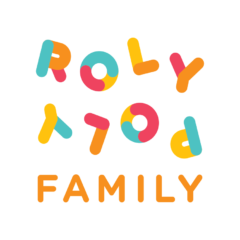Conversation with ROAR artists ila and Natalie Tse
Back in August 2020, we interviewed the Rolling On Artist Residency (ROAR) artists, ila and Natalie Tse, to check in on how they were doing, and to dialogue about their artworks for their residency with us. Segments of the interview were shared on our social media. This is the full conversation.

Hi ila and Natalie…
We’re in “phase 2” now, some workplaces are open, dining is allowed with restrictions, schools are in session… how are you doing?
Ila: Strangely, given that our daily routines revolve around Inaya, my almost four year old toddler, we didn’t really feel much impact from phase 1 other than the fact that time became more rubbery for other things, such as activities that would allow us to reset ourselves. Also, because of the vagueness of the future especially when it comes to finances, my partner Bani and I decided to stockpile on projects which as a consequence, made us really exhausted and stretched. When phase 2 kicked in, I could feel this sudden acceleration in the last few months move towards a steady pace for all three of us.
I feel very privileged to have been given many opportunities to do several one-off projects, ROAR being one of them, that have brought me out of my own bubble and pushed me to build upon my practice and processes even during this time of scarcity. There also seems to be this collective reassurance that everyone is still sensing and figuring out what is safe, functional and acceptable at this moment so it’s been a forgiving and less pressurising period.
Nat: I think we’re coping well. Many things have changed, but sometimes I also find that changes are such constants in our lives that I forget what has changed yet reminisce in fond memories, like broken footages in my mind.
Life has been somewhat busy; contrary to our initial beliefs, we have sent Dodo to school, primarily for social interaction with peers of his own age. I thought this would have allowed me to “steal” some time for myself and my work, but somehow (perhaps due to bad time management) I do not feel necessarily eased out with this new routine. Yet, work piles up, emails come in – a blessing in disguise really, at least that means some work to keep my artistic practice alive, and income to sustain the company that I co-run with my partner, Andy.
“How do we take care of ourselves, each other, and our environment?” What has been your approach to this question, in your project with ROAR?
Ila: My work has always revolved around the politics of care and it seems to be used a lot these days in our daily interactions, in media, in society as a whole. With a lot of changes especially since space and time seems to be compounding and the micro/macro is blurring into one seamless reality with not much room left for us to take time to process everything. With this, there seems to be a focus on mental health and wellness, which essentially is great. As society recognises the need for us to take care of ourselves and each other through a climate crisis that is happening rapidly, I feel that it creates a kind of self-awareness in how we can respond to these changes and create space to ruminate, to strategize and most importantly to activate within our capacities.
For ROAR, when Faye approached me and shared with me the framing, I was excited to think about what it means for children to respond to these changes and my first instinct was to create world-building exercises. I started from my own lived experience where one day I woke up and found that I couldn’t bring my child to the playground for her to do her daily physical therapy. Being non-verbal, I couldn’t explain to Inaya why on that particular morning until an indefinite time, we might have to play differently. From there, instinctually Inaya and I improvised and took to places we could still access. I realised from this small anecdote that even though our realities may have changed, notions of play and the imagined realities that they can potentially open up do not change. From there I decided to centre play as a main part of the project. Through simple world-building exercises that scaffold the narrative of a boy going through all these strange changes in his little world, I invited the parents and their children to navigate and gently activate themselves at home, improvising their way together into other little worlds.
Nat: Aligned with my interests and practices in sound, music and the environment (both urban and natural), I think I was seeking to (re-)establish relationships we have (now as adults) of our childhoods with that of our young children. Contrary to my perhaps previously “wilful” beliefs, the community is really important in raising a child. I think this is one of the lessons I learnt from interviewing the parents I will be featuring in my project, as I realised that most songs that were sung to us, were by our grandparents; as are most songs sung to my fellow parents’ children. This is something that personally I do not experience in my own family because older generations have passed on, or are simply not present.
While not explicit, I guess my approach of taking care of oneself and others during this pandemic period (and also normal periods I guess) is really through sound and movement, song and dance. Because of the circuit breaker, Dodo, myself and his papa got to spend time at home simply jamming. While we have lots of instruments at home due to the nature of our work, it heartens me to see Dodo picking up tin cans, trash cans, chopsticks and bowls to create works of art with “sound”.
While these may not necessarily address sustainability issue of our environment directly, I am a firm believer that having a keen sense of awareness to sound is being one step closer to Nature. Why so? I have been intrigued by some Asian notions of sound with the perspective that sound is an agent to the harmony of Heavens and Human, and to be in harmony with Nature one would be in harmony with self. Many times, this harmony also transcends the physical perception of hearing and sound, leading to a state of “soundless sounds”. This is also represented as the concept of nadam of the “unstruck sound”, believed to be the first sound that existed in the world. This is often practiced in yogic meditative to seek anahata nada, an inner ‘om’, if you’d like.
These are concepts that guided my PhD studies, and concepts that I continue to be intrigued by everyday because of how it relates to our being with the world, and with one another.
Anything specifically surprising, satisfying and/or challenging (from the project) you would like to share?
Ila: All three families were very invested in these activities and they would send me updates constantly on our whatsapp group chat and it really warms my heart to see them enjoying these activities. These activities were put together with a lot of care as I think about sustainability and how to make children experience that for themselves. To see the different ways in which they interpret and carry out these activities as a family especially during the period where everyone was just stuck at home and how they improvised on items that they could not get make or did not have access to, make me feel humbled and thankful that they genuinely seem to enjoy these activities.
So things like making paper from paper waste is something they can keep doing at home even after the project ends. I was not environmentally activated myself and this was a huge learning curve for me but it has been also really beneficial because I have learnt so much in a short span of time.
Natalie: Many passed down lullabies/playsongs have been lost or are on the verge of being lost. One of the families I interviewed shared very briefly a song his father used to sing to him and now to his 2 young daughters. Unfortunately, his father was unable to share it with me. We also couldn’t find recordings of the song. Thus, I am unable to recreate or record it for sharing. Some of these songs, works of art get lost with each generations’ passing. And with that, we lose a bit of ourselves in that heritage. I think it’s important to preserve these for us to understand our identities. As i sing Western songs to Dodo nowadays, as evident in my videos, it is really with pity and some guilt that I do not have these traditional songs in mother tongue languages that I can readily sing to and with him.
What’s similar and/or different about this project, compared to your other works/how you usually work
Ila: I don’t normally work with children. There is often a misconception that artists who are mothers are naturally good at making work for children but that’s not the case for everyone. But my practice has always allowed me to traverse and engage in different ways. There is still me in the output although I have never drawn comics in my entire life, it felt so natural to be doing it. Coming from a performance background and constantly thinking about labour, caretaking and maintenance, this project is another extension to all of these even if it was created for children. In my performance works, I always think of process as a way to confront the difficult questions and having these exercises performed remotely by these families as a way for them to confront these new realities mirrors the way in how I’ve approached performance.
The method of working is different definitely but I have always been keen to try out other approaches of making and creating and after ROAR I am more consciously thinking about how will a child experience and interpret the next work I am making even if the themes might be heavier for them.
Natalie: This has been a highly process-driven work. I appreciate the time given to simply reflect and ponder. I like that I could involve and even make Dodo a key subject of the project. It’s like documenting my own child’s processes as well in music-making.
Writing a blog forces me to think reflexively, conduct research, and share research that has already been done in this area. Research and practice are close to my heart and I have always been interested in seeing how they could gel in my artistic endeeavours and I thank ROAR for giving me this platform to do so.
What is the relationship, if any, for you, between art-making and caregiving?
ila: I feel that in my personal life, there is a mutualistic relationship between the two. Art-making has helped and is still helping me, confront and navigate many difficult aspects of caregiving especially for Inaya who has special needs. Without art-making in the last four years, I might not be able to cope as well with the challenges we face daily such as discrimination, lack of accessibility and resources. Art-making has allowed me to see gaps in the capitalistic system and how I can imagine other pathways for us outside of the more normative ones set by society. Also being artists, both my partner and I have been really privileged to be given different layers of support from the communities of artists who are also close friends of ours and this makes it less isolating.
On a whole, art-making and caregiving feels like the same kind of labour which is not properly valued in society and in some cases remains invisible and alienating but still society benefits from both, immensely.
Natalie: Honestly, I wouldn’t separate them.
Just like I wouldn’t actually separate life and art. LIfe and art has been separated because of economic powers, capitalism, greed etc etc. in my opinion. While I’m a subject to such forces as well, I do feel that intuitively, art is life, life is art. So art-making and caregiving are similarly symbiotic. I use a lot of songs in my parenting style. I try to give Dodo sensorially stimulating opportunities on a daily basis, even in conversations. The felt, perceptive nature of art/-making is important for me, in a way that it similarly relates to the felt vitality of the arts.

